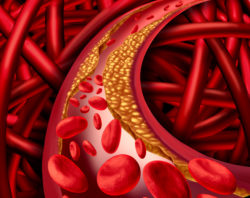Top Class Actions’s website and social media posts use affiliate links. If you make a purchase using such links, we may receive a commission, but it will not result in any additional charges to you. Please review our Affiliate Link Disclosure for more information.

Over a dozen studies have indicated that Tasigna atherosclerosis is a significant risk when taking Tasigna, with reports published about the condition in medical journals in the United States, Canada, and Europe.
Tasigna (nilotinib) was approved by the FDA in 2007, to treat chromosome-positive chronic myeloid leukemia cancer. Since its release, millions of leukemia patients have relied on Tasigna treatment to prevent their disease from progressing and maximizing the chances of survival or longevity.
However, numerous patients complain they were not warned about potential drug side effects, including Tasigna atherosclerosis.
Studies have shown a potential correlation between Tasigna and atherosclerosis has been since 2011 which has spurred major concern in the medical community. Atherosclerosis is a cardiovascular condition that occurs when the artery walls become blocked or thickened, due to the buildup of plaque. When the arterial walls thicken, the circulation of blood flow slows down considerably and can quickly evolve into peripheral arterial disease (PAD). This condition most commonly affects the arteries in the legs, but other parts of the body can also be affected.
Overview of Tasigna Atherosclerosis Correlation
Since 2013, nine Tasigna atherosclerosis studies were published that indicated a link between Tasigna and increased cardiovascular incidents requiring hospitalization. The first study observing Tasigna atherosclerosis was published in 2011, which found 25 percent of patients who were prescribed the medication experienced cardiovascular problems, with 16 percent developing peripheral arterial disease.
One of the studies analyzed was a post-market review conducted by the FDA, which looks at research from the United States, Canada, and Europe. The FDA stated its findings “strongly suggest an association between nilotinib (Tasigna) and PAOD (peripheral arterial occlusive disease).”
After these findings were made public in 2013, manufacturer Novartis updated Tasigna’s black box warning to include atherosclerosis. Patients who develop Tasigna atherosclerosis are at increased risk for blood clots, sores or ulcers, and may have trouble walking.
In serious cases, PAD patients may be at risk for lower limb amputation, and even strokes if the carotid artery is impacted enough. Tasigna patients should be wary about signs for PAD including pain or cramping, and will probably experience difficulties in activities like climbing stairs. Symptoms can be mitigated with rest, but blood circulation issues from atherosclerosis will never be resolved. Even though Tasigna atherosclerosis can be potentially fatal for patients, Novartis allegedly failed to disclose this complication in a timely manner.
Even with the black box warning updated, numerous patients complained they were not warned against potential Tasigna atherosclerosis. Patients also complained that Tasigna was available for prescription, without atherosclerosis mentioned on the warning label before the black box warning was updated.
Class action investigators are currently evaluating claims of Tasigna atherosclerosis, to determine if any of them are eligible for litigation. Tasigna patients who experienced one or more of the following side effects may have a product liability claim:
- Atherosclerosis
- Peripheral arterial disease
- Coronary artery disease
- Circulatory issues of the legs, arms, heart or brain
- Embolic occlusion
- Heart attack
- Stroke
- Infection
- Amputation
- Death
In general, Tasigna lawsuits are filed individually by each plaintiff and are not class actions.
Do YOU have a legal claim? Fill out the form on this page now for a free, immediate, and confidential case evaluation. The attorneys who work with Top Class Actions will contact you if you qualify to let you know if an individual Tasigna lawsuit or Tasigna class action lawsuit is best for you. Hurry — statutes of limitations may apply.
ATTORNEY ADVERTISING
Top Class Actions is a Proud Member of the American Bar Association
LEGAL INFORMATION IS NOT LEGAL ADVICE
Top Class Actions Legal Statement
©2008 – 2024 Top Class Actions® LLC
Various Trademarks held by their respective owners
This website is not intended for viewing or usage by European Union citizens.
Get Help – It’s Free
Join a Free Tasigna Lawsuit Investigation
If you suffered from a serious side effect or a loved one died while taking Tasigna, you may have a legal claim. See if you qualify to pursue compensation and join a free Tasigna lawsuit investigation by submitting your information for a free case evaluation.
An attorney will contact you if you qualify to discuss the details of your potential case.
Please Note: If you want to participate in this investigation, it is imperative that you reply to the law firm if they call or email you. Failing to do so may result in you not getting signed up as a client, if you qualify, or getting you dropped as a client.
Oops! We could not locate your form.












